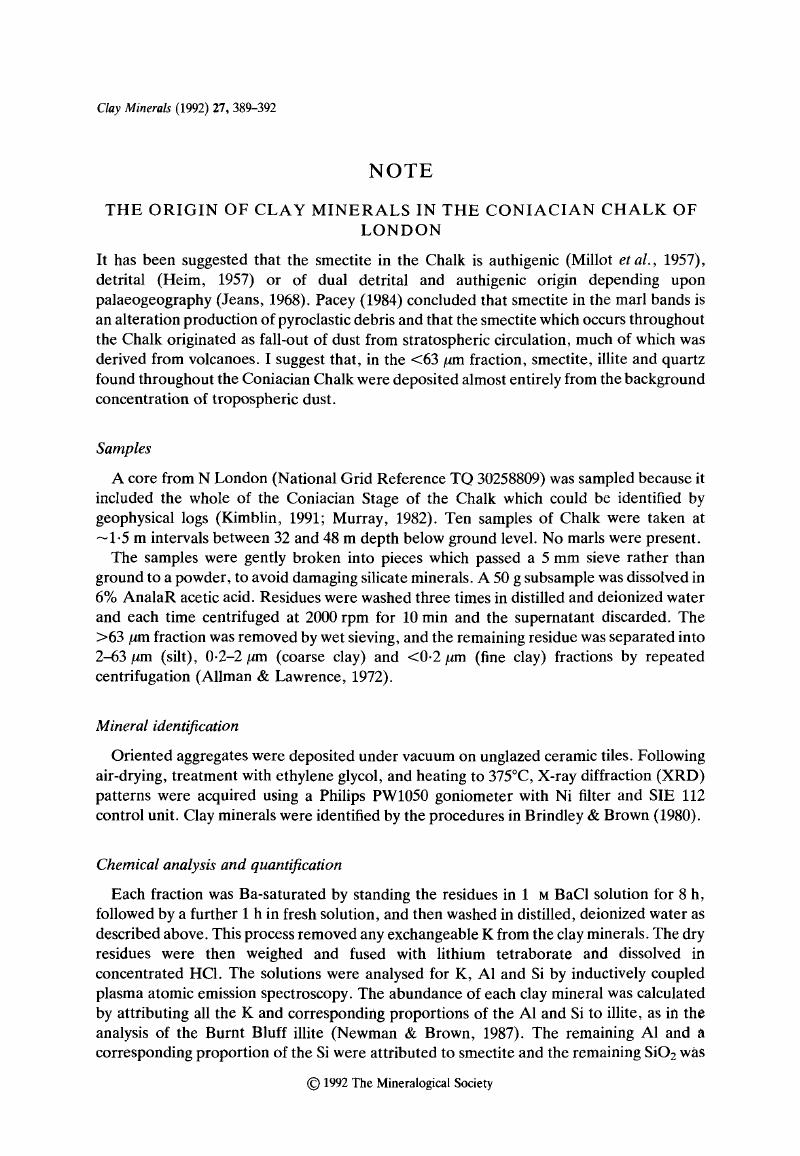Crossref Citations
This article has been cited by the following publications. This list is generated based on data provided by Crossref.
Wray, David S.
1995.
Origin of clay-rich beds in Turonian chalks from Lower Saxony, Germany — A rare-earth element study.
Chemical Geology,
Vol. 119,
Issue. 1-4,
p.
161.
Chamley, Hervé
1997.
Soils and Sediments.
p.
269.
Lindgreen, H.
Drits, V. A.
Sakharov, B. A.
Jakobsen, H. J .
Salyn, A. L.
Dainyak, L. G.
and
Krøyer, H.
2002.
The structure and diagenetic transformation of illite-smectite and chlorite-smectite from North Sea Cretaceous-Tertiary chalk.
Clay Minerals,
Vol. 37,
Issue. 3,
p.
429.
Drits, V. A.
Lindgreen, H.
Sakharov, B. A.
Jakobsen, H. J.
and
Zviagina, B. B.
2004.
The detailed structure and origin of clay minerals at the Cretaceous/Tertiary boundary, Stevns Klint (Denmark).
Clay Minerals,
Vol. 39,
Issue. 4,
p.
367.
Deconinck, Jean-François
Amédro, Francis
Baudin, François
Godet, Alexis
Pellenard, Pierre
Robaszynski, Francis
and
Zimmerlin, Irène
2005.
Late Cretaceous palaeoenvironments expressed by the clay mineralogy of Cenomanian–Campanian chalks from the east of the Paris Basin.
Cretaceous Research,
Vol. 26,
Issue. 2,
p.
171.
Jeans, C. V.
2006.
Clay mineralogy of the Cretaceous strata of the British Isles.
Clay Minerals,
Vol. 41,
Issue. 1,
p.
47.
Wray, David S.
and
Gale, Andrew S.
2006.
The palaeoenvironment and stratigraphy of Late Cretaceous Chalks.
Proceedings of the Geologists' Association,
Vol. 117,
Issue. 2,
p.
145.





